I HOPE YOU ENJOY THIS WEBSITE
My name is Alex Govier, a professional musician on accordion, piano and organ for over 50 years.

On this website I am sharing stuff to
- Improve your technique
- Help you get to know your instrument better
- Play more easily and more confidently
- Try new accordion bass methods
- Integrate bass and treble sounds in different ways
- Learn how to make better music
- Gain popularity with general music listeners and not just fellow accordionists.
And yes, ALL CONTENT ON THIS WEBSITE IS FREE.
Simply because I would like more general appreciation of this wonderful instrument.
Because by playing a little more thoughtfully we can reach new audiences and get more recognition.
Find when there is new stuff on this website by joining our new Facebook Community
Here you can also
- interact with this website on Facebook
- Ask questions
- Request more detail on an accordion subject
- Suggest a new subject
- Tell us your own ideas and more.
The Accordionwise Friends link
You can find my personal playing sites on
Accordionwise - For Accordion Players
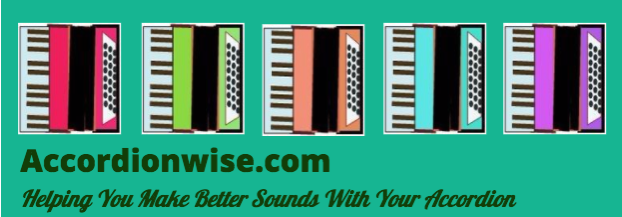
A Website About The Accordion and Making You Sound Special Playing It
To Make Even Accordion Haters Love Your Music Start Here!
Just Become a Great Player
The accordion is a much maligned but magical musical instrument, capable of doing so much more than is usually asked of it.
Most of these pages contain up to 15 or even more easy tips to try out. Just find a couple of ideas that you like and you are way ahead with your playing.
Even this introductory one has at least thirty points to ponder.
Just a little thought can make your accordion music so much more musical to listen to and on this site we aim to present a volatile mix of the obvious, the forgotten, and original possibly new ideas which may be bitterly resented!
How the accordionwise.com website came about
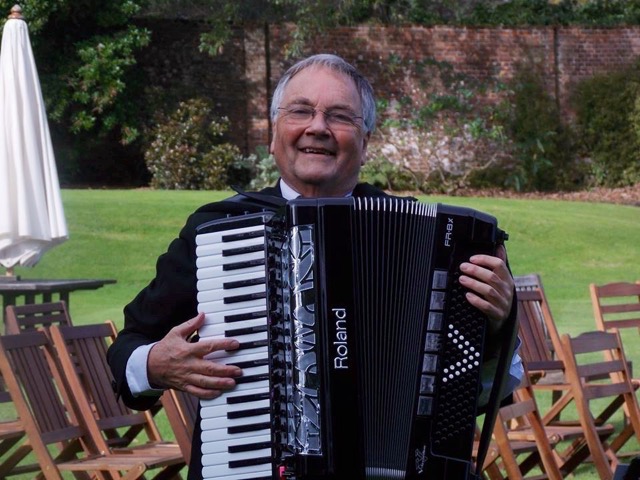 The idea for this website came when I bought my new Victoria A420V accordion to come back to acoustic playing (from the very useful and traditionally hated Roland FR-8x accordion shown in the picture).
The idea for this website came when I bought my new Victoria A420V accordion to come back to acoustic playing (from the very useful and traditionally hated Roland FR-8x accordion shown in the picture).
Much as I loved the sounds on the Roland coming back to the extra responsive acoustic Victoria professional accordion was a revelation. With all the electronic stuff out of the way it let me get back to basics and make discoveries which would benefit ALL players.
I love to practise on the Victoria acoustic every day, and every single day its lovely sounds and special touch have told me something about making accordion music sound better and better.
I had many years experience as a professional musician, not just on accordion but on piano, keyboards and organ and playing with other musicians and vocalists, so I am here to apply musical ideas learned but accordionwise.
Practical applications as you play, rather than just accumulating knowledge and technique.
![]()
I did not want to forget any of these ideas.
So I made notes about what I had learned each day on my phone, then transferred to a Word document. There was then so much there that I realised that only a website would be able to arrange it for easy access, so this is the result and please note it is FREE. I am not trying to sell you access.
And I am still learning of course. My aim is to spread these ideas around for consideration by other accordionists, so they can play other than by habit and make their music really worth listening to.
And if you have been playing a long time it will hopefully bring back the interest and enthusiasm to your playing. It is very easy to begin feeling rather bored or jaded if you think you have just learned and applied every possibility.
![]()
Leave now if you are closed Minded
If you are not prepared to rethink how you play accordion in at least a couple of ways you will learn nothing here.
Your original accordion teacher taught you everything he or she had time to schedule for your lessons but not even everything he knew or used subconsciously while playing.
It is not disloyalty to learn more now. I am sure that your original teacher would want you to carry on improving and learning
![]()
Play with Intention
If you only take one thing away from looking at this website, despite the 60 or 70 ideas presented here, please, please remember to play with intention.
Early accordion tuition necessarily starts you off by playing automatically using the standard bass note patterns all the way through and making sure you do not run out of bellows movement in the middle of a musical phrase.
For the player this is fine, but it does not produce music that is worth listening to. The player has not added himself or herself into the music.
As an easy first step make sure you feel how the bellows is affecting the notes you are playing.
This site is here to give you lots of ideas how you can be less predictable and more interesting to listen to and express yourself properly on what should be a very special instrument.
![]()
What Makes The Accordion So Special?
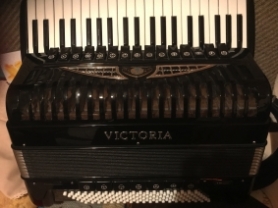
Every bass note and chord on the accordion can be accessed with only one hand so that both tune and accompaniment can be done by one player.
Not only that but every note can be controlled, via fingers and bellows to make your tunes really sing
So Are These Unique Abilities Being Fully Utilised?
 I would say not! Too many players are stuck in the basic playing mode of an easily learned repeating bass pattern, unyielding and only adapting to match the chords needed.
I would say not! Too many players are stuck in the basic playing mode of an easily learned repeating bass pattern, unyielding and only adapting to match the chords needed.
This makes it very easy to start playing the accordion. But this is just a starting point and is not very inspiring to the listener. At this stage the player successfully grinds out recognisable tunes, but not in a way that anyone who is not an accordionist himself would very much enjoy listening to it.
PLAYING TIP - DO THIS FROM NOW ON:
Really listen to yourself playing in order to detect how it sounds to your listeners and modify as you go to improve your sound. If you do not bother to listen why should you expect others to want to hear you.
![]()
Better For Musical Expression than Even a Piano
The accordion is potentially even more expressive than the Piano which is renowned for its touch sensitivity. However, with the accordion you have control of how the note sounds after it is played.
You can control whether it is on or off, the rate at which the sound decays if you decide to allow it to, and even make it grow with increased bellows pressure.
On the piano there is nothing more you can do with a note after striking it, except deciding when to let go of it.
It only takes a little more work and knowledge to have a more satistying result for the accordion player and the listener alike. And it should be even more fun improving than learning initially
![]()
How to Play Accordion or any musical instrument with Confidence

![]()
Instantly improve Your Music with These Three Tips
![]()
Number One
Play Without Music
This is why players who "have never read a note of music in their life" are often spoken of so well. The fact is that the act of reading a piece of music is a distraction from playing the music as well as you can, it is just an aid to get you started.
When you go to a piano concert the solo player plays from memory, not from music. Yes, it looks good and there are no music sheets flapping about and falling on the floor.
There is also no need for an assistant to help turn the pages, and running the risk of making things worse by misjudging where the player wants to start reading ahead on the next page.
But more importantly the player is closer to the music without having it go from eye to brain to fingers and so he or she can interpret it better to communicate to the audience.
Even those most expert at reading from music play better when not having to read.
Because the printed music should be a guide not something to chain you down. It cannot tell you everything and in the case of top line and chords copy does not tell you much.
In the case of accordion music it is probably chaining you to an approximate or even sometimes a boxy outmoded arrangement rather than one that will carry your audience along with you.
OK I know you think you always need the music in front of you, but you are wrong
People tend to think they cannot play anything without music, but you will never find out unless you try it.
As a start try a very simple tune, perhaps one that you learned at the very beginning. Play it without the music, or even with the music in front of you without looking at except when you are desperate.
It might also be a tune you are absolutely sick of playing, one of the reasons for this could be that you know it too well, so you probably do not really need the music copy already. But again you can put the music in front of you as a crutch in case you come to a bit you cannot play from memory.
If you cannot play most of it without music you probably never fully learned it in the first place.
It is also a matter of time, if you have just started playing so only played your tunes a few times. If you have played them for ten years or more you probably cannot help remembering them. So just do without the music copy in front of you.
Remembering how to play a tune can come from three different aspects of playing
- The way the hand movement feels
- The sound and shape of the tune as you hear it in your mind
- The appearance of the music on the page
![]()
Develop independence in left and right hands
Once again, you think this is an impossible goal, having been trained to just keep the left hand tapping away regardless of what the right hand is doing, hopefully changing the chords and bass notes in line with harmony.
This is automation, not music.
But do not worry this is what this website will help you develop, without needing a brain or hand transplant first.
And most of it is easy.
![]()
Number Three
Put Contrast into your music
Music without contrast is boring to listen to. It may be OK to dance to sometimes of course.
Here are TWENTYTWO WAYS you can add variety and contrast to your music. Most will be dealt with in a little more detail. To request more details just ASK by email here. There is no charge. Ask me about your particular query,
- Right hand with or without left hand for part of the tune or vice versa
- Left hand runs between lines of the song
- Right hand runs between lines of the song
- Chordless bass part with notes only
- Bass chords without notes
- Variations in phrasing
- Varying accordion sound (or if only one register vary the octave)
- Varying rhythm pattern in the bass
- Playing with or without an extra part in the right hand
- Playing with or without chords in the right hand
- Playing a simpler bass pattern for a bar or two
- Playing a more complex version of the bass pattern
- Going into two or four bar rhythm patterns
- Knowing the bass note section better
- Taking the tune to the bass side
- Making the bass chords the focus instead of the notes
- Play nicer seemingly impossible chords
- Use exact relationships between the chords to create extra detail
- Leave out accompaniment for the first note of a tune or phrase
- Use chromatic bass runs, they are useful
- Adding chromatic or semi chromatic runs in treble or bass
- Varying your approach in different parts of the song
- Varying the sound for different parts of the song
That is just a small sample, and the intention is to show you not just what you SHOULD do in these instances and WHY, but musical pointers that might show you WHEN they are desirable and most important HOW to do them.
So please read on. You might also like to visit the CONTENTS page to help you go back to particular points you are interested in, as they will be spread over different pages of the site.
Come back to this list later for reference, it is invaluable for adding variety and therefore creating listener friendly music.
![]()
THE SOUNDS ON YOUR ACCORDION

Proud of your Accordion? Then Really Use it!
If you have a lovely favourite accordion with lots of registrations then why would you always use only just the same single sound all through a song?
You can use different registers to highlight the different sections of the music, such as the verse and chorus or to vary when going to the middle eight.
When to change sounds
You can change sounds during the natural breaks in the music. Using your palm switch to go to the the big master registration is the easiest way. This is not always the nicest sound, even though the loudest, but there will definitely be contrast between the sections even if you don't always hit the register you aim for in between!.
PLAYING TIP 1 - HOW TO FIND THE RIGHT SOUND
If you only have five or seven registers it is not difficult to find the register you are looking for. If you have more 10, 12, 15 it is not so obvious where to go.
Depending on the spacing of your tabs try memorising the three or four from the bottom and from the top that you can feel the gaps between them, one finger to a tab. That could be 8 of them you can reach instantly and fairly reliably. Plus your master control from the palm switch if you have one.
The conventional solution is to associate each tab with a note on a keyboard which it lines up with hroizontally when played, but there are certain drawbacks to this method.
- You have a lot to remember and it is easy to get confused
- The tabs are not the same width as the keys alongside them and may not line up exactly, some will be halfway in between notes
- If you move across to them from a particular key you may not move your hand exactly horizontally to match that tab
- You will probably need to watch your hand anyway to see where it is going!
PLAYING TIP 1A - COMBINE METHODS
It may be easier to save the note association method for finding your register for the notes you cannot identify by the easier reach-in-from-the-top-or-bottom method and get the best of both worlds.
I am amazed at how the most wonderfui professional players peer anxiously at their accordions to see where the tab for their register is. This is one thing you may be able to beat them at!
PLAYING TIP 1B - NEVER MIND!
When you miss, try to get really good at adjusting your playing style to suit the sound you actually found!
![]()
Playing style affects the sound colour
In YouTube accordion demonstrations to sell particular instruments you will usually hear them go through all the registers on that accordion using exactly the same music.
This is for commercial fairness to you and for direct comparison between the sounds but in actual fact does not give you a good idea of what these registers can sound like or be used for, except when played in the one style chosen by the demonstrator.
Different tunes can bring out different characters of your registers, when played with insight and familiarity with your instrument. With different bellows action or with smoother or more broken up phrasing.
PLAYING TIP Number 2 CATEGORY NOT SO OBVIOUS
Even your least favourite sounds on your accordion you may suddenly get to like a lot, if you use them in a different way
Perhaps in a different style of tune, played more staccato or smoother, moulded by a different bellows action and so on.
Quite abrasive sounds can be made to sound very melodic for example if treated differently. Smooth sounds can become punchy but still very solid sounding!
VARY THE USE AND DO THIS: Try a register in a completely different style than usual (fast to slow,folk to jazz or whatever) but play it in a different manner to make it sound right. You may be surprised how well it sounds.
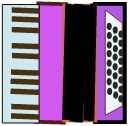
Get to really know All your Accordion's sounds to use it most effectively
Suddenly you have a better accordion! And without costing you a penny! This, I hope you realise, belongs in the Obvious section (where not everyone bothers to do this)
![]()
The musical advantage you have over a piano
On the piano there is nothing more you can do with a note after striking it, except deciding when to let go of it. It fades at a predetermined speed, though it lasts longer if you have hit it harder.
On the accordion you have exact control not only of the initial atack, but of how long it lasts or how it fades, if you decide to let it, and you can even make it grow in volume after you play it.
You also have a choice of sounds to use depending on how many treble and bass registers you have!
Just resolve to take advantage of these possibilities for musical effect and of course audience appeal.
![]()
BE AS ONE WITH YOUR INSTRUMENT!
That musical advantage you have over an electronic keyboard.
Hey but they are amazing right? All those automatic authentic rhythms with different sounds in pulsating rhythms.
But listen harder and you find they do exctly the same sequence of note patterns with chords and are actually repetitively boring. The insistent automatic note patterns actually prevent the player phrasing his tunes in the right hand freely and successfully!
You can do better than that on your accordion! And this is just one of the ideas I want you to explore on this website.

What Might Be The Main Areas for Improvement?
Probably for players to play the accordion as one instrument, not regarding it as a right hand and a left hand separately. Both should work together for the best musical result while still having true independence.
This is the exact opposite of the left hand playing the same automatic rhythm like an electronic keyboard which is what basic accordion styling does. You really do not have to play as unmusically as on an electronic keyboard.
So your actual music if you want to do this will be more interesting and your music will be liked more by those who are not just interested in accordion music.
Please carry on to see what is on all the other pages - there is so much more here for you and it is all FREE.
KEEP EXPLORING THIS TOTALLY FREE WEBSITE TO FIND EASY HACKS AND TRICKS(CONSTANTLY UPDATED)NOT ALL THE INFO REQUIRES HEAVY LIFTING! |
How to Actually Use This Info
You will not be able to incorporate these ideas into your playing instantly. Even the ones you find here that you think interesting and would like to use.
You may have well set up tunes of your own you do not want to disturb as yet and are not confident in the new ways.
So just incorporate new ideas you find on this website into new intros or interludes for the pieces you already play.
Your intro could be a special version of the last line of the song, or even a chord sequence to build the new patterns around, such as (in C) typically a bar each of C then F and two bars of G7 with a break before the melody starts.
Once you get used to using them you will probably find it easy to adopt the methods you like into your own tunes.
![]()
What Part of this Do you Not Understand?
This I want to Know!
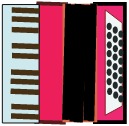 The above headline I deliberately made to sound facetious to attract attention, but actually I do want to know.
The above headline I deliberately made to sound facetious to attract attention, but actually I do want to know.
As a developing project this website so far lacks many illustration materials, such as extra pictures, scores, audio or video which will be added later as time permits. I therefore may not have expressed myself clearly enough without further explanation.
You might even like a particular point covered in more detail here. So you may even be able to influence the future direction of this website in accordance with needs I discover from your input
Please email me about any item I have not made clear for you, if possible copying and pasting into your mail the passage which was confusing you and your query or suggestion.




